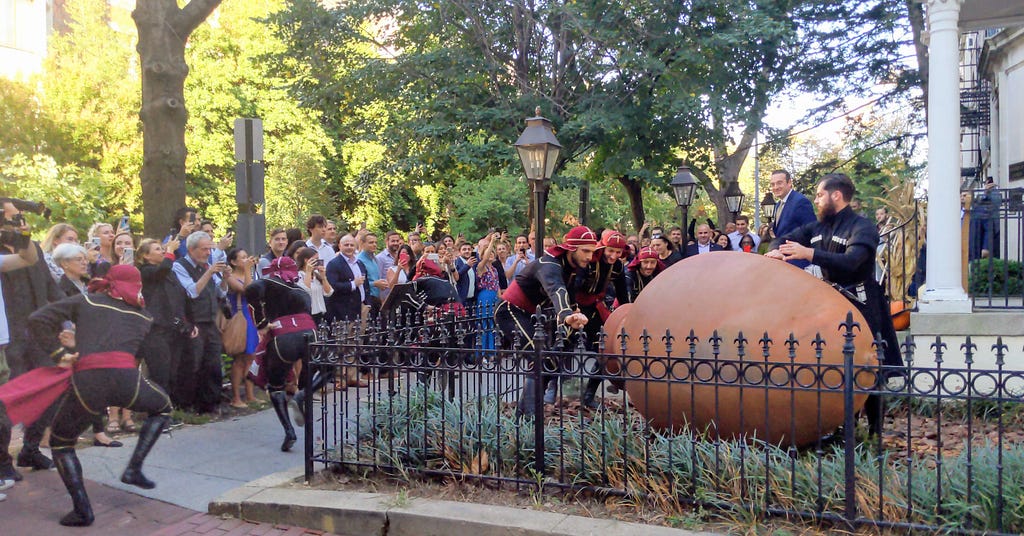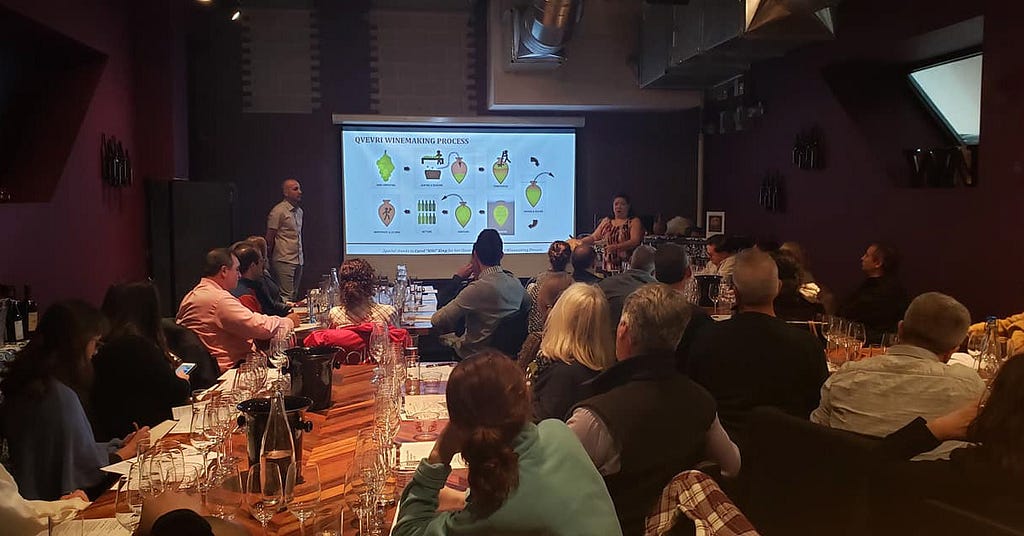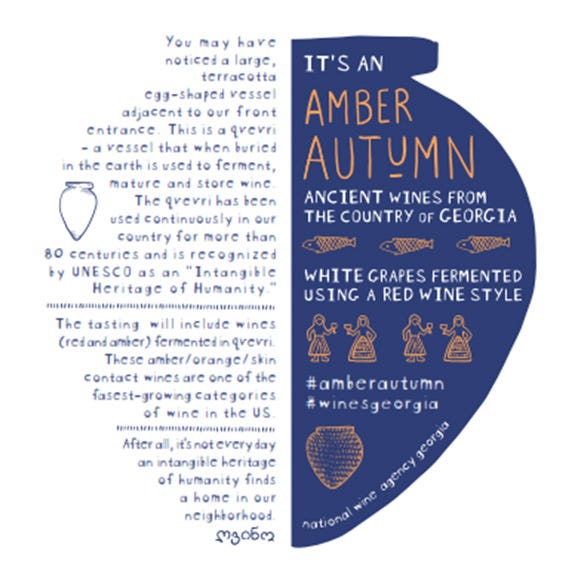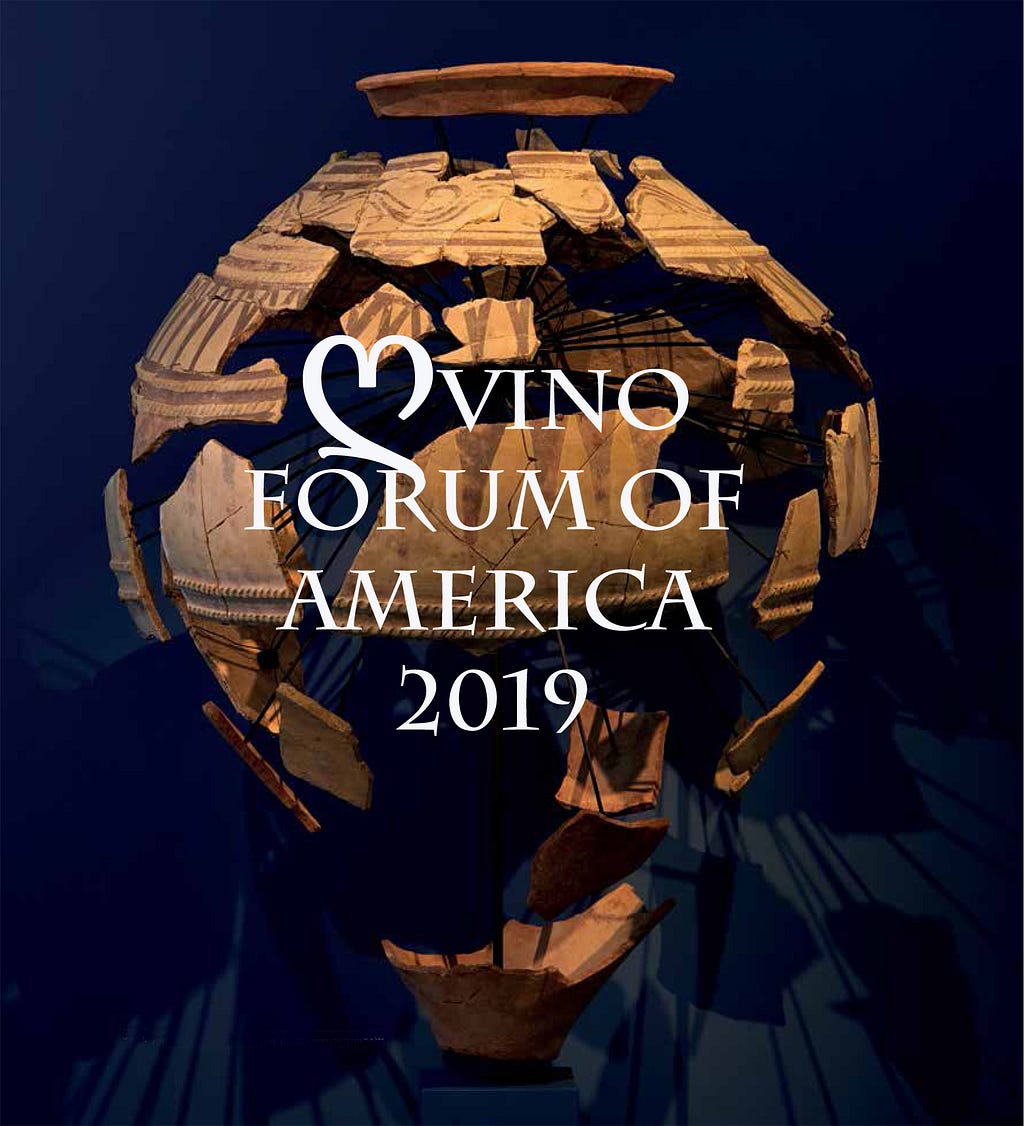Georgian Qvevri Wine month in U.S.


The Georgian Embassy started the Amber Wines October celebration with the opening of the Georgian Qvevri on October 4, at the Embassy in Dupont neighborhood of Washington, DC. Georgia — the Cradle of Wine — counts 8,000 years of non-stop wine making tradition. The unique technology of natural winemaking in Georgia is linked to Qvevri, a traditional egg-shaped vessel, which was presented to the Embassy by the National Wine Agency of Georgia. Check out the Qvevri plaque for more information on this ancient viticulture when passing by the Embassy.


Ambassador David Bakradze introduced the guests to the unique history of creating the ‘drink of Gods’ in Georgia as early as 6,000BC. The guests had an opportunity to taste a variety of Qvevri wines, both red and white, exported from Georgia by our partner companies: Georgian Wine House
and Interbalt Products. In addition, the evening featured a surprise national dance performance, which indeed lit up the Qvevri opening ceremony.
On October 27–29, the second ღvino/GHVINO FORUM of America took place in Boston, MA. The America Georgia Business Council organized a series of events to include a Saperavi and Qvevri Wine Festival at the Legal Sea Food Park Square; a day-long Qvevri Symposium at the Harvard University Faculty Club; and a Trade Tasting and Seminar at the City Winery in Boston.


Hundreds of participants had a chance to learn about Georgia’s 8,000-year-old viticulture tradition and the origin of the oldest wines in Georgia, Caucasus and beyond; the impact of the wine industry on Georgia’s economic development, and the penetration of Georgian wines into the mainstream American market. Most importantly, they had a chance to taste exceptional Georgian wines.


With the support of the National Wine Agency, ten wine cellars from Georgia were also present at the RAW Wine International Exhibition of Natural Wines in New York this October and will also participate at the RAW Wine LA Exhibition in Los Angeles on November 3–4. Given the potential for finding partners and increasing exports, presenting Georgian wines to the U.S. is particularly important. This country is one of the strategic export markets of Georgian wine, with 9 million bottles of wine exported in the first 9 months of this year, up 60% from the same period last year.
To conclude the Georgian Qvevri Wine Celebration month, the Embassy hosted the screening of an iconic Georgian movie by Otar Ioseliani — Falling Leaves / გიორგობისთვე, depicting the Soviet era practice of favoring quantity over quality production in contrast to the current status of Georgia becoming one of the most unique wines producer today.


Georgian Wine Exports to the U.S. Surge 88% During First Half of 2019
According to the National Wine Agency of Georgia statistics, 2019 export figures show continued dramatic market growth in the U.S., making it the 10th largest Georgian export market (+88% YOY). This increase follows a three-year average growth surge of 54% year on year.
“This growth can be attributed to a blend of three market variables,” reports Julie Peterson, Managing Partner of Marq Wine Group, which has been leading strategy for the region over the last four years. “Wine professionals have discovered Georgia’s indigenous varietals, which reflect a deep sense of place. There is also a growing interest in low-intervention wines, and as Georgians have continually produced wines using natural, ancient methods for 8,000 years, they stand at the epicenter of this practice. Finally, the ‘amber’ or skin contact wine category, which emerged a few years ago, continues to build exponentially.”
New York City-based sommelier Pascaline Lepeltier, MS, of Racines NY says: “Low-intervention wines — which often encompass natural, organic, and biodynamic practices — are a growing movement, for which traditionally-made Georgian wines are one of the most remarkable examples: not because of anything new they are doing, but because they have been making wines this way for 8,000 years.”
Bordered by Russia, Azerbaijan, Armenia, Turkey, and The Black Sea, Georgia is at a literal geographic crossroads and was on the historic Silk Route. While this location contributed to the country’s rich artistic, culinary, religious, and cultural tapestry, it also invited invasion after invasion. The continual outside influence solidified a strong Georgian identity, as well as created a home winemaking tradition. Today, there are more than 100,000 registered home wineries in this small country, as well as 500 registered wine companies. There are a staggering 525 grape varieties currently recorded, with 45 in current commercial production. Fifty-thousand hectares are planted to vine across ten official wine regions. “Ghvino,” “ღvino,” or “ღვინო” is the Georgian word for “wine,” and is widely thought to be the origin of the term.


